Step by Step Guide for Organic Tomato Terrace Gardening:
Well, organic tomatoes are becoming popular as no one wants to consume chemically grown. However, there are some challenges in growing organic food. Especially people who want to utilize their terrace space for organic tomato gardening. Tomatoes are one of those simply grown veggies in an organic terrace garden that can be grown all around the year. Organically grown tomatoes are more nutritious in some ways than the conventionally grown tomato varieties. The organically grown tomatoes, while smaller, have higher levels of vitamin C as well as more plant phenols, a group of compounds that act as antioxidants, than do conventionally grown tomatoes. The organic variety might taste slightly different, as they have higher levels of sugar. Organic tomatoes have higher levels of chemicals called polyphenols than “conventionally grown” tomatoes. Organic tomatoes ripen for longer as they are grown in less nitrogen-rich soil they would have higher levels of polyphenols.
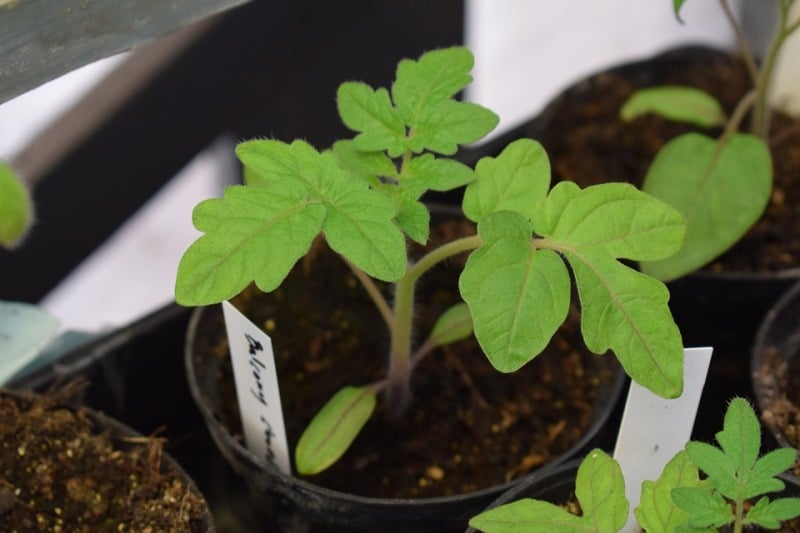
Certified organic crops normally cannot be produced using synthetic fertilizers, pesticides or genetically modified organisms, while some synthetic chemicals are allowed if they cannot be produced naturally and are not harmful.
Organic farming doesn’t involve nitrogenous fertilizers or pesticides, which allow tomato plants to strengthen their own natural defenses. This result increases antioxidant levels. In other words, a stronger plant that is a healthier plant is a more nutritious plant.
Tips and Ideas for Organic Terrace Tomato Gardening:

- Now let us see how you can use your terrace for organic tomato gardening, find the tips for it.
- Tomatoes are a pretty easy crop overall, but there are some things you can do to ensure excellent crop health and strong production.
- Choose suitable companion plants for Tomatoes. Most gardeners develop a variety of vegetables, and some make better “companion” crops because they help tomatoes to thrive or improve their flavor. For example, basil, dill, mint, and parsley all repel insects and disease while improving growth and flavor.
- Select the right containers and soil for growing tomatoes in the terrace. If you want to cultivate tomatoes in a container, be careful to avoid clay or porcelain which can dry out quickly. Instead, select plastic or fiberglass. Choose a larger pot that provides good drainage and plant tomatoes in peat or compost-based soil (do not simply dig up soil from the garden, as lighter soil is better for your tomato seedlings).
- Prune tomato plants carefully. Not all tomato plants want to prune, so it’s important to determine whether a particular variety could benefit from being cut back. Read up on the right way to prune, so you can improve tomato output.
Select the right container for the terrace garden:
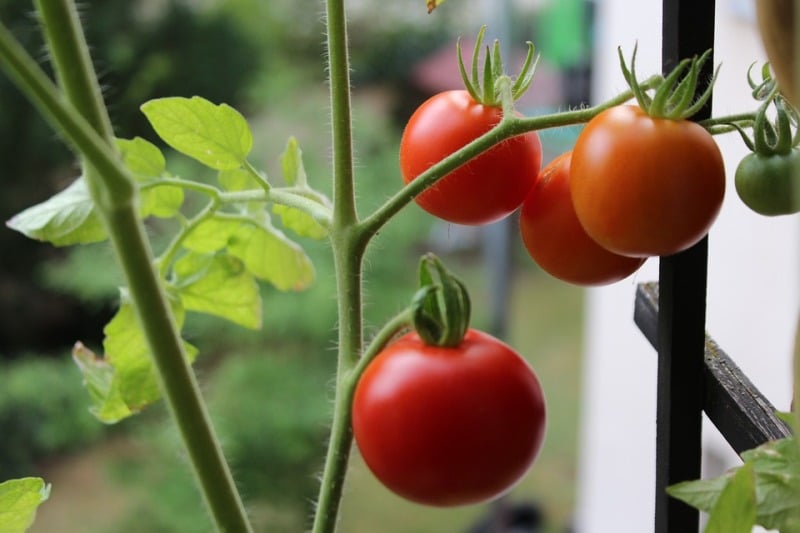
You may be interested to check Growing Kale at Home.
After you find the perfect tomato plant, it is time to plant it. In general, plastic or fiberglass pots are best for growing tomatoes in the terrace for a few reasons. Plastic and fiberglass, unlike clay pots, don’t dry out quickly, and tomatoes love heat, they don’t like being dry and dry soil is a huge detriment to fruit production. Tomatoes want to grow in a reasonably large pot. A pot must be 8 inches deep. That’s the absolute minimum. 12 or 16-inch pots or containers are even better. Plastic is inexpensive, even for huge pots or containers, and it’s unlikely to break the way clay so often does. For a cheap selection, you can plant tomatoes in a five-gallon bucket. They are the very perfect size, and the price can’t be beaten.
After you have the perfect pot or container, make sure that it has adequate drainage and tomato plant will rot if it is sitting in soggy soil all the time. Most purchased pots have drainage holes in the bottom, but if you’re using a 5-gallon bucket, drill several holes in the bottom. If the pot using has large drainage holes, use a piece of a broken pot, a piece of window screening, or a paper coffee filter to cover it. This way the water can drain out, although the soil won’t end up all over the patio.
Choose a sunny location:
Tomato plants love to thrive well in the sun. So always choose that sunny spot which gets an excellent amount of sunshine for about 8 to 10 hours
Seed sowing of Tomato:
Always begin with viable and healthy tomato seeds. Fill the seedling tray with organic Potting Mix and sow the seeds. Sow one seed per cup and cover with a polythene sheet to ensure good germination of seeds. The tomatoes seedlings will be ready for transplanting to the pots or containers by 3- 4 weeks. Choose large size containers as tomato plants are huge feeders of nutrients with large root area. Also, ensure that the potting mix must be well-draining and rich in nutrients.
Planting material
Tomato is propagated by using seeds. Seed selection is a very important aspect of organic tomato production. For raising nurseries, seeds of high yielding varieties with tolerance to pests and diseases can be used. They must be carefully selected from certified organic farms or from own seed plot which is raised organically. To start with, chemically untreated seeds from local high yielding varieties could be used, in the absence of organically produced seeds.
Seed treatment
It is a very important point for gardeners especially in terrace organic tomato gardening, seeds must not be treated with any chemical fungicides or pesticides. Prior to sowing, the seeds must be treated with Trichoderma at the rate of 1 g per 150 g of seeds.
Best soil and planting techniques for growing organic Tomatoes:
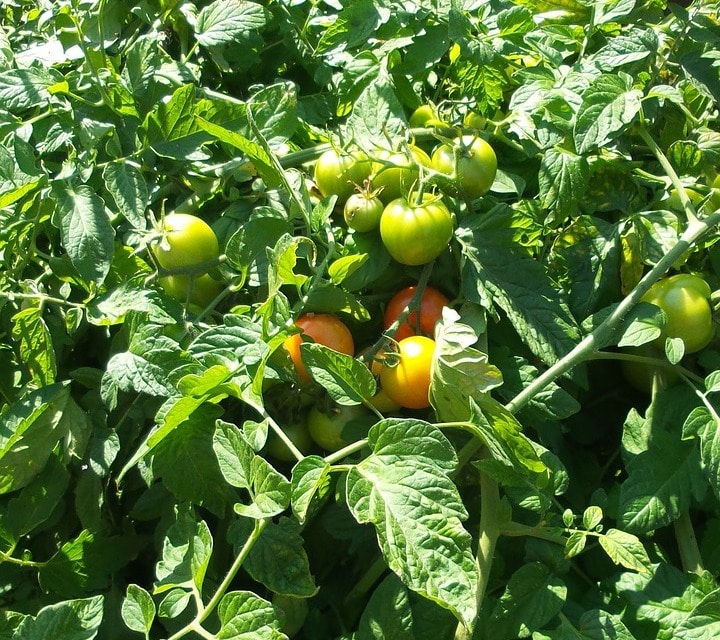
You may be interested in reading Growing Collard Greens.
Any good quality organic potting soil works for growing tomatoes and doesn’t use soil dug directly from the garden. It is too heavy for container gardens, and it compacts more as the period goes on.
When planting the tomato, put some soil in the bottom of the pot or container and set the tomato plant in. Bury the stem to below the lowest set of leaves. New roots develop along the buried section of stem, making for a healthier plant. After you have the plant set at the accurate level, fill in around it with potting soil, patting down lightly as you go. The soil must go up to about an inch below the rim of the pot to allow room for watering. After it’s potted, give the tomato plant an accurate watering and set it in place.
Water requirement for growing Tomatoes:
Prevent split tomatoes by maintaining a reliable soil moisture balance. Check the soil often to observe if the tomato plant needs to be watered. Insert a finger into the tomato potting soil. If it is dry then, it’s time to water.
Manuring
In order to maintain fertile soil, the organic matter must be added to it regularly. If organic farming is being performed on own land for many years, the soil will have excellent nutrient content. Compost or Farmyard manures can also be added to further enrich the soil. Application of organic manure is important for tomato cultivation. After mixing the required amount of Trichoderma the manure must be allowed to remain in a heap covered with wet gunny bag for proper culturing.
Companion plants for Tomatoes in terrace garden:
A few companion plants for tomatoes contain:
- Basil: known to increase the flavor of tomatoes
- Marigolds: They are the good pest deterrents, besides enhancing the beauty of the garden
- Carrots: Plant carrots two weeks before you plant the tomatoes, to give them a chance, and then plant tomatoes in around them. This helps carrots to obtain shade during hot summers. Though the carrots may be a little smaller, as the tomato roots will probably win the space battle, but they will be flavor-packed.
- Lettuce: The tomatoes shade the lettuce in the hot summer months, making it easier to develop lettuce all year.
- Beans: Beans supply nitrogen to the soil. Tomato plants love nitrogen.
You may check this Growing Moringa from Seeds, Cuttings.
Organic Tomato Fertilizer
As opposed to synthetic fertilizers that can contain chemicals or GMO’s, organic tomato fertilizers are 100% safe to use in the garden, around children and pets and they are environmentally friendly. Organic tomato fertilizers have ingredients that are directly sourced from nature and have not been genetically engineered. The downside of using an organic tomato fertilizer is that it can work at a slower rate and contain other ingredients like fish byproducts which can give it a strong odor.
Care and maintenance
Once you’ve selected a good, bright spot and a good tomato variety, caring for tomatoes planting in the terrace isn’t really much different than caring for any other houseplant.
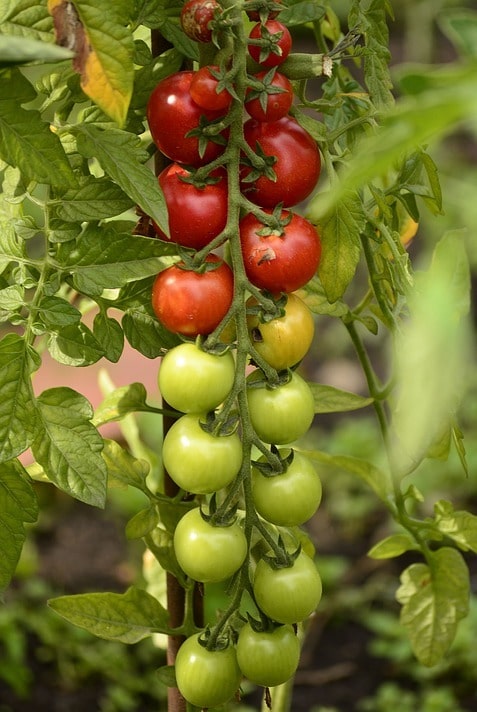
Fertilizer:
A diluted, weekly dose of fish emulsion or liquid kelp keep the tomato plant growing healthy so it can generate fruit. Vermicompost tea, sea kelp or fish emulsion all work well for fertilizing tomatoes.
Pests and control:
Pest and their control for growing tomatoes in an organic way;
Crop rotations, which assist in breaking life cycles of insects and pests, are a traditional means of pest control. Control of tomato pests requires careful monitoring and integration of cultural practices and biological control. A wide range of biological pesticides is obtainable to keep pests below the thresh hold level. It has been observed that organic tomato plants have fewer pest and insect problems than conventional chemically developed tomato plants. Moreover, practicing crop rotation aids in breaking the life cycle of insects and pests hence reducing the pest menace.
You may be interested in Growing Chinese Cabbage in Home Garden.
Trap crops are effective in controlling pests. The main example of a trap crop is sweet corn. Sweet corn attracts tomato fruit worm and protects the tomato crop when inter-planted with it. Fruit Borer is one of the main threats to tomato crop. In order to prevent damage to the crop from fruit borer, marigold must be raised in the adjoining plot to divert the attention of the fruit borer. In case eggs of the insect are originated on the leaves of the plant trichocard can be applied. The amount of pest attack increases, 4% solution of the neem seed extract can be sprayed on plants at 15 days interval to control the insect. Among the alternatives, biological control of pests is one of the important means to examine pest problems in tomato.
Biopesticides contain living organisms which can destroy pests. Use of biopesticides is one of the appropriate and promising processes of pest management. Ha NPV (Nuclear Polyhedrosis Virus) is used against the Heliothis armigera (fruit borer) in growing tomato. Trichoderma is the most generally used fungal biopesticide. It is helpful against root fungi. They are perfect for seed treatment also. Trichogramma belongs to a large set of egg parasitoids and success has been achieved against the lepidopteran pests of commercial crops like a tomato. Tricho cards are used beside the fruit borers. Neem based pesticides like neem cake, neem seed kernel extract (NSKE), neem leaf extract, and, neem oil, etc., act as a repellent and antifeedant and its oil is effective against fruit borer
Weed Control:
Weeds are a big nuisance as they take up the nutrients in the soil and can harbor insects and diseases that can harm the crop of tomatoes. These weeds start growing 4 to 5 weeks after transplanting the tomato saplings. Therefore, focus on extensive weed control through this period and don’t let the weeds grow in significant numbers. Organic weed control can be reached by using organic matter and mulches, as these restrict weed growth. Crop rotation, sanitation, and shallow tilling can help in controlling the spread of weeds.
Harvesting Tomatoes:
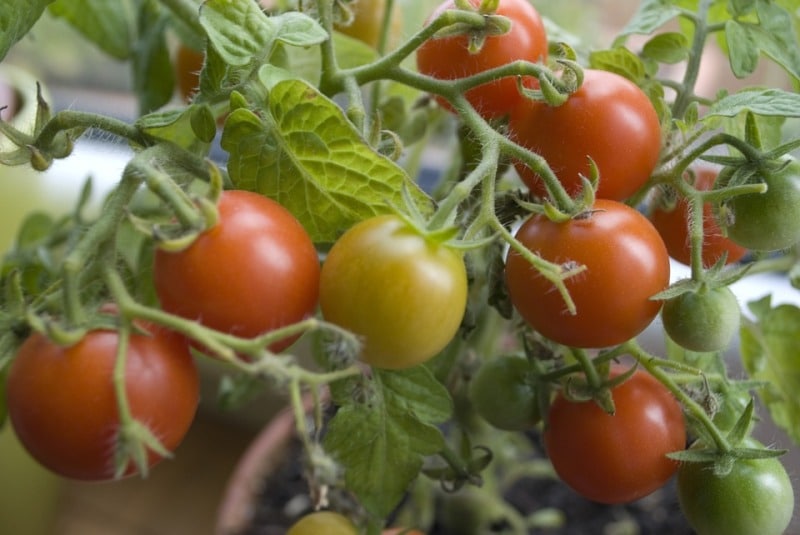
Tomatoes can be harvested when the color changes from green to yellow or red color.
That’s all folks about using the terrace for organic tomato gardening. Keep growing organic food and happy gardening!.
You may also read the Advantages of Green Leaf Manuring.